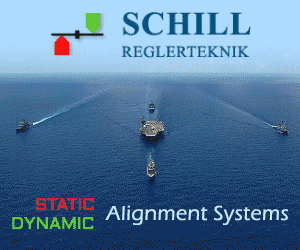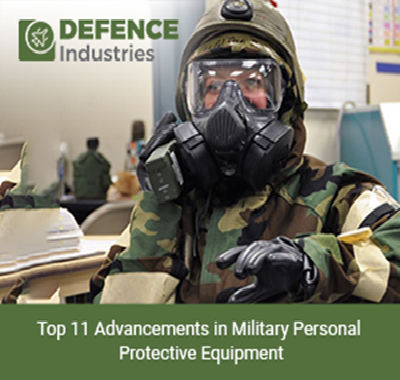Articles
Different Modes of Medical Evacuation Vehicles in Defence Industries

Internationally, Militaries and government deal with medical support operations. Medical evacuation or medivac in the modern world is used in saving people from natural disasters as no wars fought. These maintained in diverse and dangerous agency environments facing challenges by rendering medical support. The faster medivac helicopters, armoured ambulances, roadable aircraft and aero-flight evacuation, will help in life-saving within less time. Medivac involves the appropriate and efficient shifting of casualties and the provision of en route preventive care to the wounded evacuated to undergo medical facilities using medically equipped vehicles or aircraft (air ambulances).
5 Different Medical Evacuation Vehicles:
Medical Evacuation Vehicle M1133:
M1133 is the armoured ambulance ICV. The rear compartment has been expanded with vertical walls and a 25cm higher roof, the rear third falls a slope earthward. Two beds stacked two high on either side of the rear compartment, and seats for three will be found on both sides. It can totally carry four severely injured and six partial injured (who can sit ), each bed capable of weighing 136 kg. The medical assistant had an equipped portable seat that can be packed in front of the medicine cabinet. M1133 is fitted with the medical communications system for combat casualty care, which provides previous medical records for personnel.
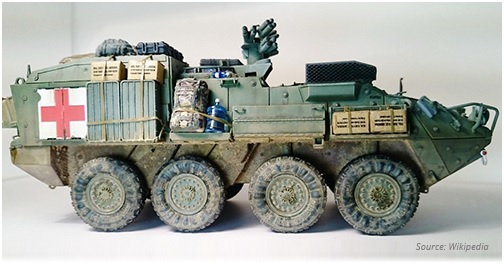
The M1133 is unarmed, but six four-barrel M6 smoke grenade launchers are installed on a joined platform at the front of the vehicle for self-protection. These vehicles do not have an air conditioning system installed, but testing revealed its need. Latest production vehicles are factory-equipped with air conditioning.
INKAS Armoured Medical Evacuation Vehicle:
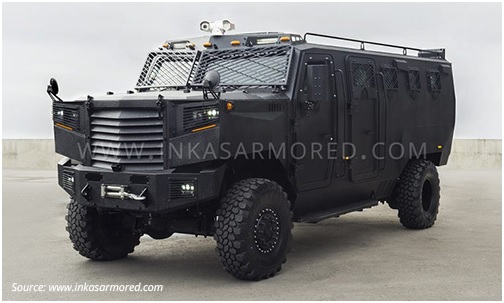
The INKAS MEV is a capable multipurpose vehicle specially built to carry personnel and help in search and provide rescue services in any area. INKAS Armored Medical Evacuation Vehicle (AMEV) is a multipurpose vehicle particularly designed to accommodate severe environments and rocky areas. It can safely transport up to 14 personnel or 2 personnel and 6 wounded. The vehicle can have extended services or equipment within law enforcement. The vehicle is powered by an inline-6 diesel engine providing 330 horsepower and 950 lb-ft of torque able to move a top speed of 130km/h. It is better in terms of both versatility and dependability allowing a strong stage for further customizations.
Tigr BMA armoured casualty evacuation vehicle:
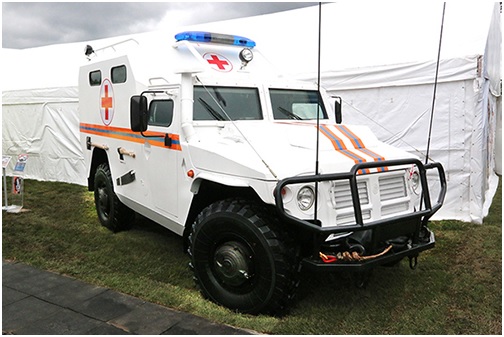
The Military Industrial Company has paid out of pocket, developing the Tigr BMA armoured casevac. The concept of a casevac on the Tigr’s chassis dates back as far as 2009 when the Neva Express high-speed train suffered an accident. At the time, 28 persons died in the crash. Many could have been saved, but the ordinary ambulances were unable to reach the crash site closer than 1.5 km due to inaccessible terrain.
The baseline model carries four wounded on litters or four sitting wounded. The casevac’s crew may include the driver/medic, doctor/doctor’s assistant and/or nursing orderly. The vehicle can be outfitted with any medical equipment the customer wishes, including special intensive care equipment. The casualties are loaded right on the litters via the single-leaf rear door. The lower part of the door is hinged downwards, thus creating a ramp with steps to facilitate entry, especially when carrying casualties on litters.
To brief up the vehicle’s night-time operation capabilities, it is equipped with four searchlights – one on the roof and three at the rear of the roof.
The comfortable environment for the casualties and medical crew is owing to a new armoured body with the 10.3- m³ internal volume, which is mounted on the chassis of the baseline Tigr. The useful internal volume accounts for 7.7 m³. This allows placing casualties on litters one above another and provide the medical crew with unimpeded access to them to administer first aid right on the move. The armoured body and bulletproof windows of the casevac meet the STANAG 4569 Level 2 standard of ballistic protection.
The Tigr can operate in various climes, in broken terrain, 24/7 and in any season. The Tigr armoured wheeled vehicle featuring an enlarged internal volume also can be used as the cassis for command and vehicles requiring high manoeuvrability, crew comfort and, certainly, reliability.
Roadable VTOL Aircraft:

A Multicopter aerospace company released details about its AT Transformer vehicle technology which has completed its first driving tests. Roadable VTOL Aircraft designed for medical evacuation and manned or unmanned cargo supplies. Its unmanned capabilities can keep the cargo safe. It is used as dual mode it can fly, and at the same time, it can be driven. This vehicle uses turbo diesel engines with aerodynamic enhancements which move with a speed of 130 in the air and 70 on the road. It has a payload capacity of 1000lbs or 5 passengers while fly and 1600lbs or 8 passengers on the road. It can be either called as a flying truck or a roadable helicopter.
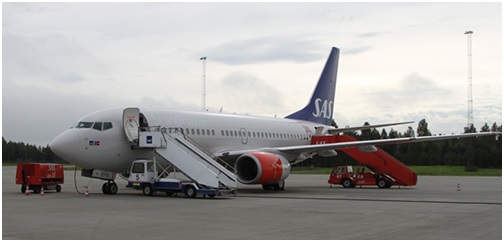
A complete range of equipment to change an airliner into a strategic evacuation unit.
Role equipment for converting civilian airliners or military aircraft with seat rails into Aerial Evacuation units. Equipment including stretcher racks, electro medical racks, oxygen bottles, cooling box pallets and AE stretchers.




